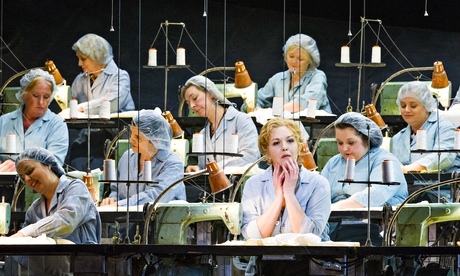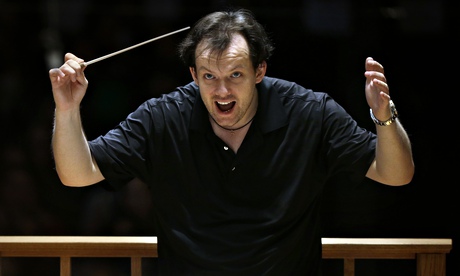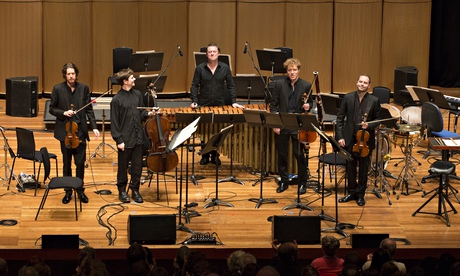One of the inspirations for Der Fliegende Holländer was a near disastrous stormy voyage that Wagner, his wife and his dog took from Riga to London. Later he claimed (and there’s no knowing with Wagner, whose gift for improvised narrative was prodigious) that hearing the crew sing as they cast anchor and furled sails inspired the theme of the sailors’ chorus in The Flying Dutchman.
Neither sail nor anchor feature much in the Royal Opera’s dark, abstract staging by Tim Albery, designed by Michael Levine and revived for a second time (by Daniel Dooner). Bryn Terfel, at his magnificent best, returns to the title role he created for this 2009 production. A curved rake, suggesting both wave and deck, occupies the stage, with an array of ropes, ladder and bridge, beautifully lit by David Finn, telling you all you need to know unless you’re addicted to the literal.
In this early, quintessentially Romantic score, a tale of a tormented sea captain seeking redemption through love, Wagner plunges in with an overture of squally, tossing horror. The subsequent music, whether four-square jaunty or lurching in triplet rhythms, barely lets up – especially in the Dresden version, performed without an interval. The conductor, Andris Nelsons, commanded a sense of ebb and flow but still the music never rests. Albery’s ingenious solution is to create a stillness and intensity on stage.
Nowhere is this more potent than in Terfel’s performance. Ever more burnished and controlled vocally, he has a dazzling range of expression, from the quietest of pianissimos to the loudest, most merciless roar. His acting, restrained and minimal, is as much part of his artistry. As the hapless Senta, a girl driven by a desire to escape, Canadian soprano Adrianne Pieczonka was outstanding, matching Terfel in her physical quietude, never missing a note, strange, impetuous, mad.
Michael König lacked vocal heft as Erik, an elusive role to establish, but Peter Rose (Daland), Ed Lyon (Steersman) and Catherine Wyn-Rogers (Mary) all gave strong support, as did the chorus. The sailors, real and spectral, were powerful and gutsy. The women’s sewing (machine) chorus sounded terrific and looked a picture – never before have The Pajama Game and Wagner had so much in common.
The ROH orchestra, while certainly not at sea, sounded unusually queasy. I am a devoted fan of this ensemble (see past reviews, passim) but have noticed some nerve-racking slippage of late. Often this happens when the balance of fixed members and freelancers changes. That watertight confidence which allows the players to shine is threatened. Is this the case here? And if so, why? I hope to discover.
One long note, two short. Out of this simple pattern, the skeleton of a song composed years earlier, Schubert built the theme and five variations which form the slow movement of his D minor string quartet, “Death and the Maiden” (1824). By the time he wrote it, he knew he was seriously ill. He told a friend that each night he went to sleep hoping “not to wake up again, and each morning serves only to renew yesterday’s grief”.
Whether or not you know this background, the title of his String Quartet No 14, with its intimations of premature mortality, is enough to set the dark mood for this most frequently performed of chamber works. The Takács Quartet played it at Wigmore Hall in a sell-out Schubert birthday concert (31 January), together with the “Rosamunde” Quartet in A minor, also based on a song, and the one-movement Quartettsatz in C minor: his three mature works in the form. Audience concentration was absolute, no cough or rustle audible.
What does it mean for an ensemble such as the Takács, or the Amadeus or Busch or countless others before and since, to play a work over and over again, or for an audience (newcomers aside) to want, almost crave, that repetition? The group’s insightful cellist, András Fejér, barely needed the music. He was in my line of vision so I noticed. It may have been true of his superb colleagues too, violinists Edward Dusinberre and Károly Schranz and violist Geraldine Walther.
This question of repetition – why do the old when you could try the new? – remains one of the hoariest in classical music now, as it never was in the past. Taste and economics are obvious factors: mainstream repertoire sells tickets and stocks never run dry. Beyond that, and the obvious observation that no two performances can possibly be identical, the answer varies.
For questing performers – let’s not mention those who don’t mind repeating themselves – so much is down to the essential matter of what the composer wanted. You might think there was nothing new to learn about Schubert. Yet last week the German publishers Henle issued the first facsimile of the autograph manuscript, complete with ink splodges and second thoughts, of another Schubert chamber work, the great Piano Trio in E flat Op 100. In a preface, the pianist András Schiff – a Schubert faithful all his life – observed that neither musicologists or interpreters have “yet been able to distinguish between Schubert’s accents and his decrescendo signs”.
This is pretty fundamental: does he want a note with extra emphasis or, conversely, less. Loud or soft? Fast or slow? These are the basic tools of interpretation. In the case of “Death and the Maiden”, the work was published after his death. The score was finished, but not prepared for an edition. We can only guess what extra markings – speed, dynamics, mood – he might have added. These unknowns help explain why one group might play the slow movement theme with funereal sobriety, another with poignant, wistful lyricism. (Misha Donat’s Building a Library for Radio 3, still available on iPlayer, gives a glimpse of the variety on offer.)
No wonder the Takács, founded in Budapest in 1975 and with some personnel changes on the way, continue their rewarding journey with this music. Last week they favoured warmth and momentum, taking a free, almost improvised approach to tempi and keeping their fastest, effervescent prestissimo to the coda. “Didn’t they speed up a bit where Schubert doesn’t mark anything?” asked a seriously attentive neighbour. That’s what set me to thinking about it. Next time they may sound quite different. The changes won’t be arbitrary.











